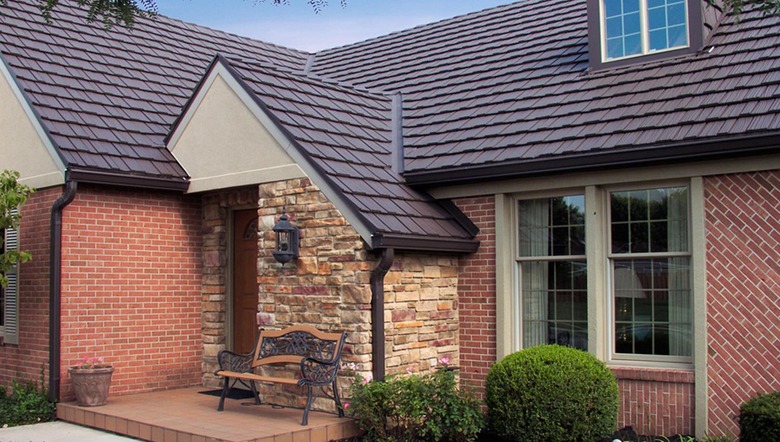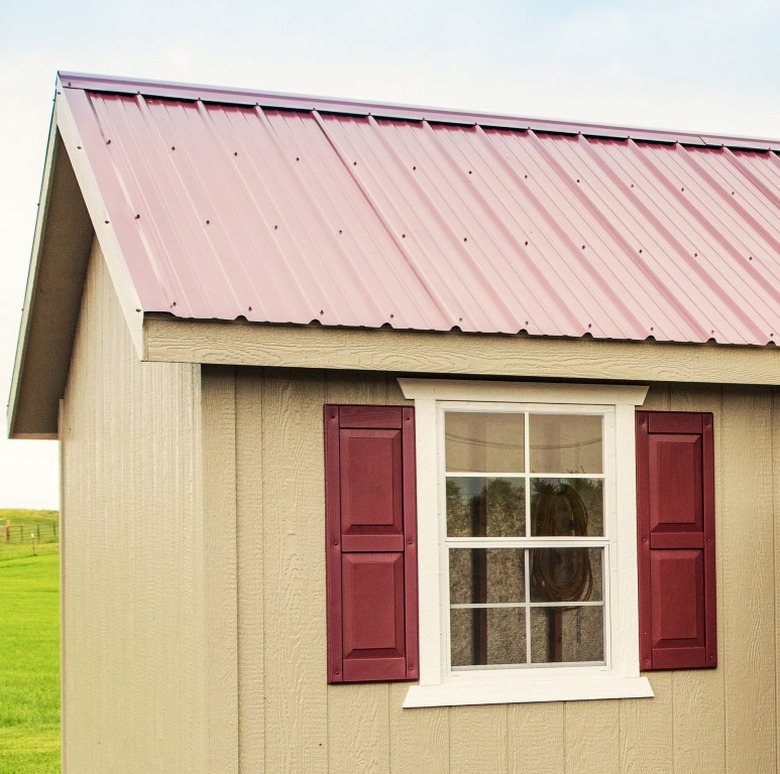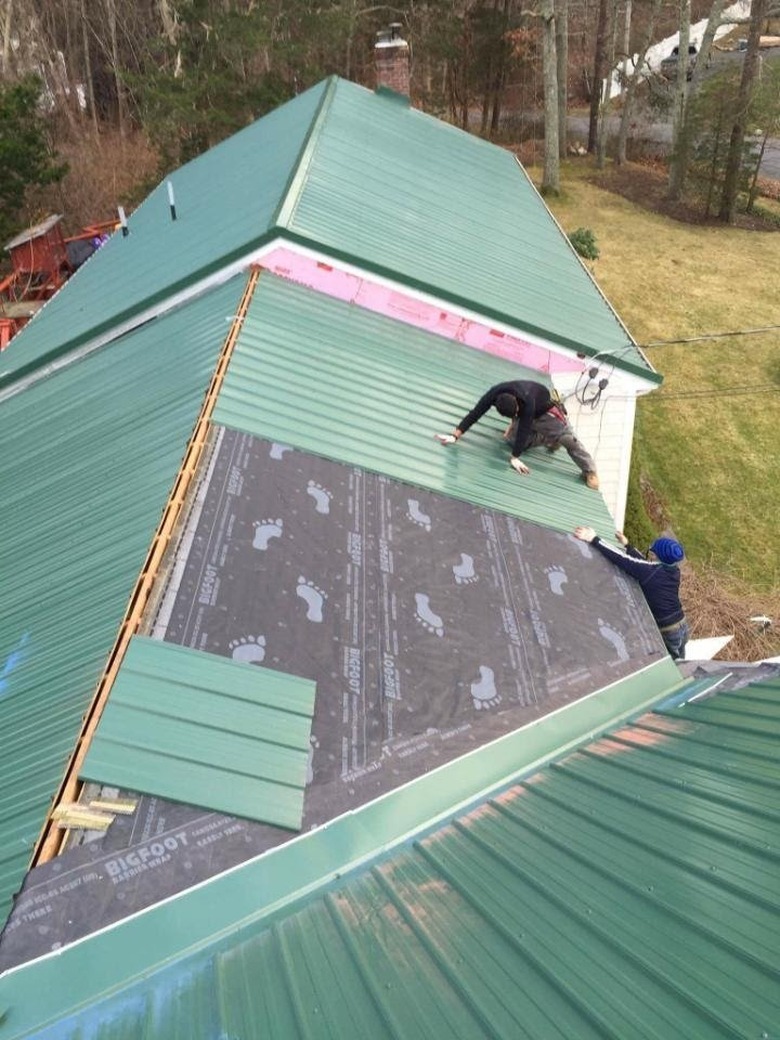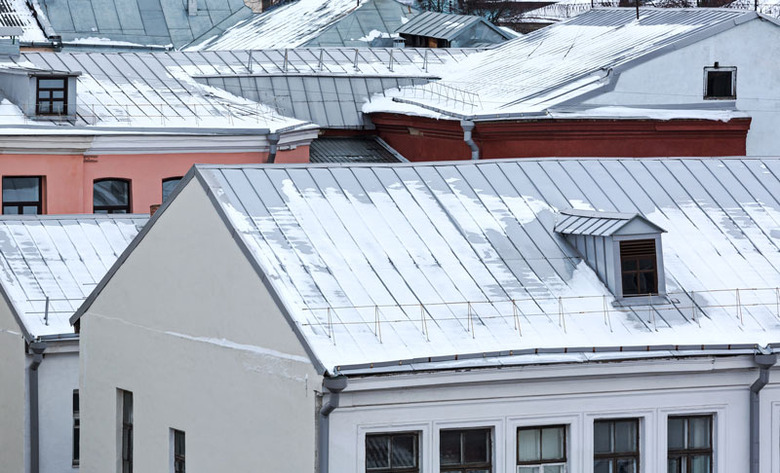What You Need To Know About Metal Roofing
With a cost that runs about three times that of traditional asphalt shingles, metal roofing is definitely a premium building material, but if you're building a new home or re-roofing your existing one, the extra expense may well be worth it. Metal is a lightweight roof covering that is completely leakproof when properly installed, and it's unlikely you will install a metal roof more than once in the time you own the home. Most metal roofs can be expected to last at least 50 years if properly installed and maintained. Cost isn't the only drawback of metal roofing, but the other disadvantages are minor when compared with those of other types of roofing.
If you're considering a metal roof, you may be put off by the backwoods appearance of corrugated or standing-seam panels. That shouldn't be a deal breaker, because metal shingles and tiles are now common, and they look surprisingly similar to the materials they mimic. No matter which style you choose, professional installation guarantees a watertight coating that sheds snow, reflects sunlight and won't support the growth of moss or mold to the same extent as other materials.
Metal Roofing Materials and Finishes
Metal Roofing Materials and Finishes
Metal roofing can be made from steel, aluminum, copper or zinc, and it often—though not always—sports a factory finish. It can take the form of shingles, tiles or as standing-seam panels, and you can also buy corrugated metal roofing for utility buildings, sheds and barns.
- Hot-dip galvanized steel (G-90 steel) is the most affordable material, and it can be formed into shingles, tiles or panels. It is generally guaranteed for 50 years or more, but if the galvanized coating gets scratched or damaged, the metal will rust.
- Galvalume steel is a step up from galvanized steel. Instead of the zinc oxide coating of galvanized steel, galvalume steel has an aluminum-zinc-silicon alloy. It is recommended for beachfront properties because of its superior resistance to salty air, but shouldn't be used around concrete or mortar, which are highly alkaline and will corrode it quickly.
- Aluminum costs about the same as galvalume steel, and it has even better resistance to salty air. Its greatest advantage is that, should the finish get scratched, it won't show any rust discoloration.
- Copper and zinc are both high-end choices. Copper costs about twice as much as steel or aluminum, and zinc costs about 30 percent less than copper. Both materials can last as long as the building lasts, even if they don't have a finish.
Metal roofing can come with a 50- or even 70-year warranty, but the guarantee on the finish is typically more in the neighborhood of 35 years or less. Two types of coatings are common. The first, polyvinylidene fluoride (PVDF), is sold under the brand names Kynar and Hylar, is the longest-lasting. The alternative is polyester. It costs less up front, but because it doesn't last as long, it may end up costing more in the long run.
Tip
Stone or granular coatings are available that make steel shingles look like asphalt or steel tiles resemble stone. These coatings generally deteriorate more quickly than paint, they are more difficult to refinish, and they provide a substrate on which moss and algae can grow. Be aware of these limitations if you are considering such a product.
How Metal Roofing Is Installed
How Metal Roofing Is Installed
It's better for the home's foundation if you remove old roofing before re-roofing. However, if that's impractical, you made a good decision by choosing metal roofing, because it doesn't add much weight. You can install a metal roof directly on top of a single layer of asphalt shingles with little possibility of damage to the frame or foundation of your house.
At one time, roofing manufacturers recommended installing battens across the roof decking to slightly elevate raised metal panels, and this made installation of metal roofing more costly than other types of roofing. Contemporary products, however, are designed to be applied directly to the roof decking. If the existing roofing is flat and there is only a single layer, there is usually no need to remove it (check with local building code requirements on this). This can greatly reduce the cost of metal roofing installation.
Metal shingles get nailed to the roof decking in the same way that asphalt shingles are attached. You can attach these directly over a single layer of old shingles or to the bare roof deck.
If you're installing a metal roof over a bare roof deck, don't forget to include a waterproof insulating underlayment in your materials list. Metal is a good thermal conductor, so you need the insulating layer to keep the house warm. The underlayment gets stapled to the roof deck before construction of the frame and installation of the roofing.
It's probably a job for pros. A homeowner with good skills is certainly able to nail metal shingles to a roof deck. However, because the shingles are fragile and dent easily, it's important to avoid walking on them. For this reason, you need to plan the job more carefully than you do for installing conventional roofing, and you may need scaffolding and other safety equipment.
Planning is even more important when installing raised seam metal panels. Measuring and cutting the panels to the correct dimensions can be an exercise in precision. Moreover, it's critical to follow recommended procedures for connecting and fastening the panels—failure to do this precisely can cause the roof to leak. Given all this, it's best to leave the installation of metal roofing to professionals who have the required tools and experience to allow them to guarantee their work.
Pros and Cons of Metal Roofing
Pros and Cons of Metal Roofing
Metal roofs are common in places where snow falls heavily in the winter. Metal reflects sunlight and creates enough heat during the day to partially melt the snow, which slides easily off the smooth metal surface. Even if snow isn't your main concern, you can still find several reasons to like metal roofs:
- Metal is long-lasting. A metal roof typically lasts 50 years or more, and it requires little maintenance.
- A properly installed metal roof can easily withstand high winds—even hurricane-force—without shearing or bending.
- A metal roof won't catch fire, so it's one of the safest roofs to have in dry, fire-prone regions.
- Because it reflects sunlight rather than absorbing it as asphalt shingles do, a metal roof keeps your home cooler on hot summer days.
- Metal roofing is suitable for very steep roofs, and it's also appropriate for roof pitches as low as 3/12—3 inches of rise per horizontal foot.
No roofing material is perfect, and metal does have its drawbacks. It's important to consider them before signing on the dotted line of your installation contract.
- Depending on the type of roof, you may find the sound of raindrops striking the metal disturbing. This is especially true of metal panels installed on a batten frame.
- Hailstones and other falling objects can dent the roofing, crack the finish and expose the metal to rust.
- Proper installation is paramount in order to avoid leaking. Once a metal roof leaks, it can be difficult to repair, and some parts of it may need to be replaced.
- Expansion and contraction can cause fasteners to work themselves loose, and the roofing may develop waves and may even leak. This problem is easy to correct, though, by simply retightening the fasteners.
- You won't be able to walk on the roof as easily as you can on an asphalt roof. Metal is slippery, and it dents easily. If you need to go onto the roof frequently—perhaps to service solar panels or to adjust a satellite dish—you may be better off installing conventional shingles.



